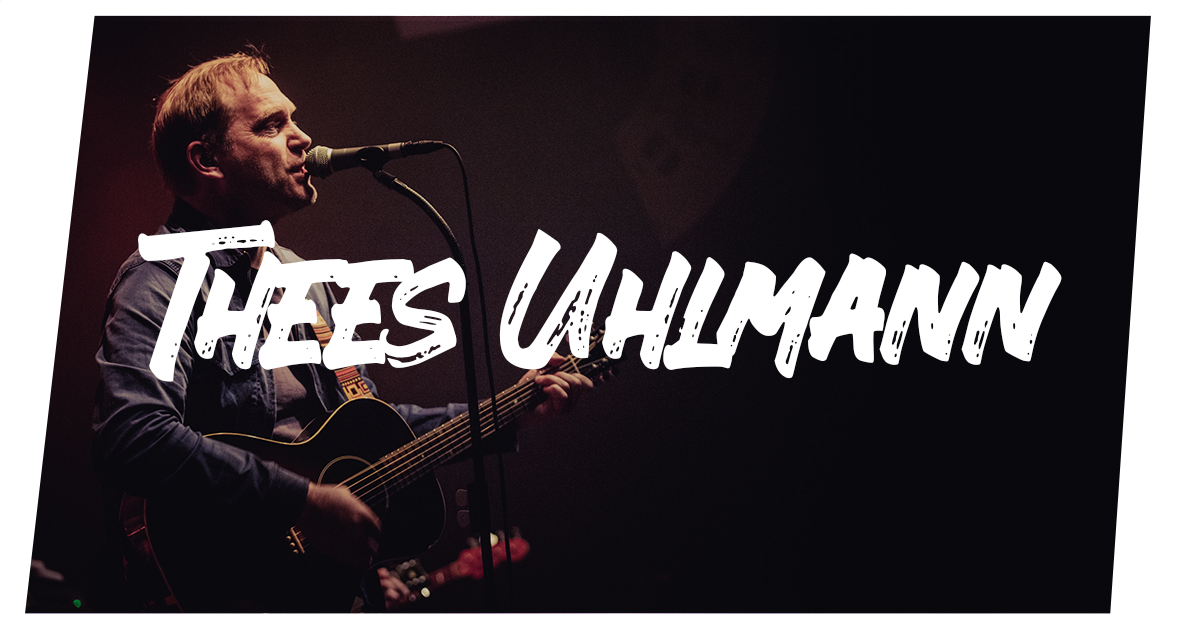The Ultimate Guide To Writing For Your Audience: Essential Tips And Techniques
What is "thees"? An archaic form of the second-person singular pronoun "thou", "thees" was commonly used in the English language until the 17th century.
Historically, "thees" was employed as both the subject and object form of the second-person singular pronoun, much like how "you" is used today. It was frequently encountered in religious texts, literary works, and formal settings.
The use of "thees" declined significantly during the 17th century, gradually replaced by "you" which became the standard second-person singular pronoun. This shift was influenced by factors such as the rise of standard English and the influence of the printing press, which helped standardize language usage.
- May 17th Zodiac
- Matthew Perry Brooke Mueller
- Vin Diesel Gal Gadot
- Wade Wilson Crime Scene Photos
- Jung Hae In Kim Soo Hyun
Today, "thees" is primarily encountered in historical or literary contexts, particularly in works from the medieval and early modern periods. Its usage adds a sense of antiquity and formality to the text.
thees in Language Evolution
The evolution of "thees" from a commonly used pronoun to an archaic form reflects broader changes in the English language over time. As societies evolve and communication patterns shift, language adapts to meet new needs and preferences.
The replacement of "thees" with "you" exemplifies this process. "You" emerged as a more versatile and inclusive pronoun, encompassing both singular and plural forms. Its adoption simplified the English language and made it more accessible to a wider range of speakers.
- Zoe Perry Spouse
- Why Did The Little Couple Get Divorced
- Dark Pick Up Lines
- Billy Ray Cyrus Billy Ray Cyrus
- How Old Is Jid
{point}
As a second-person singular pronoun, "thees" served the grammatical functions of subject and object. It was used to refer to the individual being addressed, whether as the doer of an action (subject) or the recipient of an action (object).
{point}
"thees" was prevalent in English from the Anglo-Saxon period through the Middle Ages. Its usage persisted in some dialects and literary styles until the 17th century, but it gradually fell out of favor as "you" became the dominant second-person singular pronoun.
{point}
"thees" continues to be employed in literature, particularly in historical or period pieces. It adds a touch of authenticity to dialogue and prose, transporting readers back in time. Authors may also use "thees" to create a specific tone or atmosphere within their works.
thees
The archaic pronoun "thees" holds historical significance and linguistic value. Its evolution from a commonly used pronoun to an archaic form reflects broader changes in the English language over time.
- Grammatical Function: Subject and object form of the second-person singular pronoun.
- Historical Context: Prevalent in English from the Anglo-Saxon period to the 17th century.
- Literary Significance: Adds authenticity to historical or period literature.
- Linguistic Evolution: Replaced by "you" as the dominant second-person singular pronoun.
- Dialectal Variation: Some dialects retained "thees" longer than others.
- Social Context: "Thees" was often used in formal or religious settings.
- Cognitive Impact: Its archaic nature can evoke a sense of nostalgia or formality.
- Cross-Linguistic Comparison: Similar pronouns exist in other languages, reflecting universal grammatical categories.
These aspects highlight the multifaceted nature of "thees." Its grammatical function, historical evolution, and continued use in literature showcase the dynamic nature of language and its ability to adapt to changing societal and linguistic needs.
Grammatical Function
As a second-person singular pronoun, "thees" functioned both as the subject and object of a sentence. In this capacity, it served to identify the individual being addressed or referred to.
For example, in the sentence "Thees art a kind soul," "thees" acts as the subject, indicating that the person being addressed possesses a kind nature.
In contrast, in the sentence "I give thees this gift," "thees" serves as the object, denoting the recipient of the gift.
Understanding the grammatical function of "thees" is crucial for interpreting its usage in historical texts and appreciating its role in conveying meaning.
Historical Context
The historical context of "thees" is significant in understanding its evolution and usage. During the Anglo-Saxon period, which spanned from the 5th to the 11th centuries, "thees" was the standard second-person singular pronoun in the English language.
This prevalence continued throughout the Middle Ages, where "thees" was commonly employed in both spoken and written communication. Its usage extended across various social and literary contexts, reflecting its central role in the English language.
However, the 17th century marked a turning point in the history of "thees." The rise of standard English, influenced by factors such as the printing press and increased literacy, led to a gradual shift towards "you" as the dominant second-person singular pronoun.
Despite its decline in everyday usage, "thees" persisted in certain dialects and literary styles. In the 18th and 19th centuries, it experienced a revival in some literary circles, particularly among writers seeking to evoke a sense of historical authenticity or formality.
Today, "thees" remains an archaic form, primarily encountered in historical or literary contexts. Its historical prevalence provides valuable insights into the evolution of the English language and the changing conventions of pronoun usage over time.
Literary Significance
The literary significance of "thees" lies in its ability to evoke a sense of historical authenticity and enhance the immersion of readers in period literature.
- Historical Accuracy: By employing "thees," authors can accurately portray the language and speech patterns of characters from past eras, creating a more realistic and believable narrative.
- Cultural Context: "Thees" helps establish the cultural context of a literary work, reflecting the social norms and linguistic conventions of the time period being depicted.
- Emotional Resonance: The archaic nature of "thees" can elicit emotional responses from readers, evoking a sense of nostalgia or reverence for the past.
- Characterization: The use of "thees" can contribute to characterization, distinguishing characters from different social classes or historical periods based on their speech patterns.
Overall, the literary significance of "thees" lies in its ability to transport readers back in time, enhancing their understanding and appreciation of historical or period literature.
Linguistic Evolution
The linguistic evolution of "thees" to "you" as the dominant second-person singular pronoun is a significant chapter in the history of the English language. This shift, which occurred primarily during the 17th century, reflects broader changes in language and society.
- Standardization and Accessibility: The rise of standard English and the influence of the printing press promoted consistency in language usage. "You" emerged as a more versatile and inclusive pronoun, encompassing both singular and plural forms, making it more accessible and convenient for a wider range of speakers.
- Social Factors: Shifts in social hierarchy and power dynamics influenced language use. The use of "you" became more widespread as a respectful and egalitarian form of address, replacing the more formal and hierarchical "thees" in many contexts.
- Dialectal Variation: While "you" gained dominance in standard English, "thees" persisted in certain dialects and regional variations. This dialectal variation reflects the diverse linguistic landscape of the English language and the influence of regional customs and traditions.
- Literary and Historical Preservation: "Thees" continues to be employed in literary and historical contexts to maintain authenticity and evoke a sense of the past. Its presence in period literature and historical documents provides valuable insights into the linguistic and cultural norms of bygone eras.
The linguistic evolution of "thees" to "you" is a testament to the dynamic nature of language, shaped by social, cultural, and historical forces. Understanding this evolution enhances our appreciation for the richness and complexity of the English language.
Dialectal Variation
The retention of "thees" in certain dialects provides valuable insights into the historical development and regional diversity of the English language.
Dialectal variation arises from various factors, including geographical isolation, cultural influences, and social customs. In the case of "thees," its continued usage in some dialects can be attributed to:
- Geographic Isolation: In remote areas or communities with limited contact with standard English, traditional speech patterns, including the use of "thees," may persist for extended periods.
- Cultural Influences: Local traditions, cultural norms, and a sense of regional identity can contribute to the preservation of "thees" in certain dialects.
Understanding dialectal variation is crucial for several reasons:
- Historical Linguistics: It sheds light on the evolution of the English language and the diverse linguistic influences that have shaped it over time.
- Sociolinguistics: It provides insights into the relationship between language and social factors, such as regional identity and cultural heritage.
- Language Preservation: Documenting and preserving dialectal variations contributes to the overall vitality and richness of the English language.
In conclusion, the retention of "thees" in some dialects is a testament to the dynamic and multifaceted nature of language. It highlights the influence of geography, culture, and social factors on language variation, providing valuable insights for historical linguistics, sociolinguistics, and language preservation efforts.
Social Context
The usage of "thees" in formal or religious settings can be attributed to several factors:
- Respect and Deference: In formal contexts, "thees" conveyed a sense of respect and deference to the person being addressed. It acknowledged their higher social status or authority.
- Religious Significance: In religious contexts, "thees" held particular significance. It reflected the belief that individuals were directly addressing God or other divine beings, emphasizing humility and reverence.
Understanding the social context of "thees" is crucial for interpreting historical texts and comprehending the nuances of past communication. For example, in the King James Bible, "thees" is frequently employed to convey the sacred nature of the text and the relationship between God and humanity.
Furthermore, the use of "thees" in formal settings highlights the importance of social hierarchy and the conventions of politeness in different eras. It provides insights into the social norms and expectations that shaped language usage.
In conclusion, the social context of "thees" sheds light on the intricate relationship between language, society, and religion. It enhances our understanding of historical texts, social dynamics, and the evolution of language over time.
Cognitive Impact
The archaic nature of "thees" contributes to its cognitive impact, evoking distinct sentiments and conveying specific tones in various contexts.
- Nostalgia and Historical Connection: The use of "thees" can trigger feelings of nostalgia and establish a connection with the past. It transports readers or listeners back in time, allowing them to experience the language and communication styles of bygone eras.
- Sense of Formality and Respect: In certain contexts, employing "thees" conveys a sense of formality and respect. It acknowledges the social hierarchy or authority of the person being addressed, reflecting the cultural norms and conventions of the time period.
- Literary and Artistic Expression: "Thees" finds its place in literature and art as a means of evoking specific emotions or creating a desired atmosphere. Authors and artists utilize its archaic qualities to enhance the authenticity of historical settings or convey a sense of solemnity or reverence.
- Linguistic Appreciation: The archaic nature of "thees" prompts linguistic appreciation and an understanding of language evolution. It encourages individuals to explore the historical development of the English language and appreciate the nuances of its past forms.
In conclusion, the archaic nature of "thees" exerts a cognitive impact, evoking nostalgia, conveying formality, enriching literary expression, and fostering linguistic appreciation. It serves as a reminder of the dynamic and evolving nature of language, connecting us to the past while shaping our present communication.
Cross-Linguistic Comparison
Cross-linguistic comparison sheds light on the universal grammatical categories that govern human language, including the existence of second-person singular pronouns akin to "thees." This comparative analysis provides valuable insights into the fundamental structure and evolution of languages.
- Cognitive Universals: The presence of second-person singular pronouns across diverse languages suggests that they fulfill a fundamental cognitive function. These pronouns allow speakers to distinguish between the speaker, the person being addressed, and other individuals, reflecting the universal human capacity for self-awareness and social interaction.
- Grammatical Parallels: In many languages, second-person singular pronouns exhibit similar grammatical properties to "thees." They function as subjects and objects in sentences, participating in a range of syntactic constructions. This grammatical consistency highlights the cross-linguistic significance of this pronominal category.
- Historical Evolution: Comparative analysis of second-person singular pronouns reveals both similarities and variations in their historical development. While some languages have retained archaic forms similar to "thees," others have undergone significant changes, reflecting the dynamic nature of language evolution.
- Sociocultural Influences: The use of second-person singular pronouns is influenced by sociocultural factors, including social hierarchy and politeness conventions. In some cultures, distinct pronouns are employed to convey respect or deference to individuals based on their age, status, or relationship to the speaker.
By examining the cross-linguistic similarities and variations in second-person singular pronouns, we gain a deeper understanding of "thees" within the broader context of human language. This comparative perspective enriches our appreciation for the diversity and unity of linguistic expression.
FAQs on "Thees"
This section addresses frequently asked questions about "thees," providing concise and informative answers to enhance understanding.
Question 1: What is the meaning and origin of "thees"?
Answer: "Thees" is an archaic second-person singular pronoun, originating from the Old English word "thu." It was commonly used in the English language until the 17th century, gradually replaced by "you" as the standard pronoun.
Question 2: Why is "thees" no longer commonly used in modern English?
Answer: The shift from "thees" to "you" reflects broader changes in the English language during the 17th century. Factors such as the rise of standard English and the influence of the printing press contributed to the standardization of language usage, favoring "you" as the more versatile and inclusive pronoun.
In summary, "thees" holds historical significance as an archaic pronoun, providing insights into the evolution of the English language. Its continued presence in literary and historical contexts adds authenticity and depth to narratives.
Conclusion
Our exploration of "thees" reveals its multifaceted nature, encompassing grammatical function, historical evolution, literary significance, linguistic evolution, and cross-linguistic comparisons. This archaic pronoun serves as a reminder of the dynamic nature of language, reflecting societal and linguistic changes over time.
The continued presence of "thees" in literature and historical contexts underscores its enduring value. It adds authenticity to narratives, evokes nostalgia, and enhances our understanding of past communication styles. As we delve into the study of "thees," we gain not only a deeper appreciation for the English language but also a glimpse into the rich tapestry of human expression.

Murs & The Grouch Thees Handz » Respecta The Ultimate HipHop Portal

Konzertfotos Thees Uhlmann live in Kiel • Fabian Lippke » Fotograf

Thees Uhlmann Tickets Concerts and Tours 2023 2024 Wegow